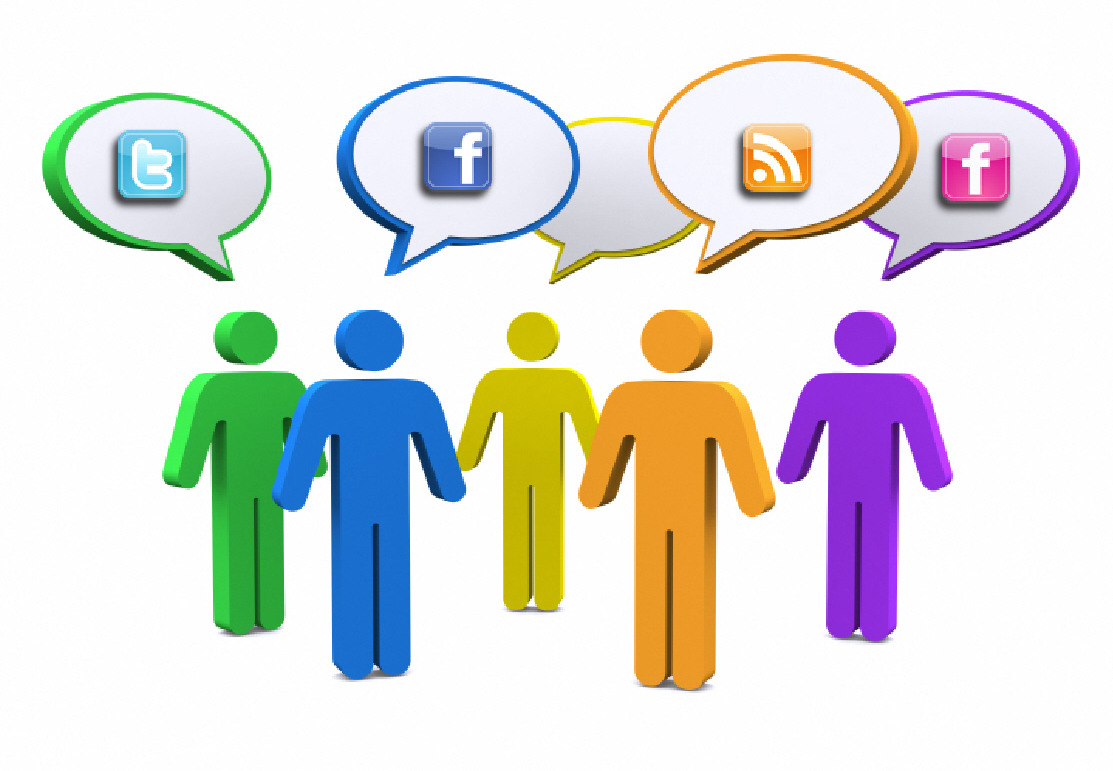 The psychology of color as it relates to persuasion is one of the most interesting—and most controversial—aspects of marketing.
The psychology of color as it relates to persuasion is one of the most interesting—and most controversial—aspects of marketing.
The reason: Most of today’s conversations on colors and persuasion consist of hunches, anecdotal evidence and advertisers blowing smoke about “colors and the mind.â€
To alleviate this trend and give proper treatment to a truly fascinating element of human behavior, today we’re going to cover a selection of the most reliable research on color theory and persuasion.â¨
Misconceptions around the Psychology of Color
Why does color psychology invoke so much conversation … but is backed with so little factual data?
As research shows, it’s likely because elements such as personal preference, experiences, upbringing, cultural differences, context, etc., often muddy the effect individual colors have on us. So the idea that colors such as yellow or purple are able to invoke some sort of hyper-specific emotion is about as accurate as your standard Tarot card reading.
The conversation is only worsened by incredibly vapid visuals that sum up color psychology with awesome “facts†such as this one:â¨

Don’t fret, though. Now it’s time to take a look at some research-backed insights on how color plays a role in persuasion.â¨
The Importance of Colors in Brandingâ¨
First, let’s address branding, which is one of the most important issues relating to color perception and the area where many articles on this subject run into problems.
There have been numerous attempts to classify consumer responses to different individual colors:â¨

... but the truth of the matter is that color is too dependent on personal experiences to be universally translated to specific feelings.
But there are broader messaging patterns to be found in color perceptions. For instance, colors play a fairly substantial role in purchases and branding.
In an appropriately titled study called Impact of Color in Marketing, researchers found that up to 90% of snap judgments made about products can be based on color alone (depending on the product).â¨
And in regards to the role that color plays in branding, results from studies such as The Interactive Effects of Colors show that the relationship between brands and color hinges on the perceived appropriateness of the color being used for the particular brand (in other words, does the color "fit" what is being sold).â¨
The study Exciting Red and Competent Blue also confirms that purchasing intent is greatly affected by colors due to the impact they have on how a brand is perceived. This means that colors influence how consumers view the "personality" of the brand in question (after all, who would want to buy a Harley Davidson motorcycle if they didn’t get the feeling that Harleys were rugged and cool?).â¨
Additional studies have revealed that our brains prefer recognizable brands, which makes color incredibly important when creating a brand identity. It has even been suggested in Color Research & Application that it is of paramount importance for new brands to specifically target logo colors that ensure differentiation from entrenched competitors (if the competition all uses blue, you'll stand out by using purple).
When it comes to picking the “right†color, research has found that predicting consumer reaction to color appropriateness in relation to the product is far more important than the individual color itself.⨠So, if Harley owners buy the product in order to feel rugged, you could assume that the pink + glitter edition wouldn't sell all that well.
Psychologist and Stanford professor Jennifer Aaker has conducted studies on this very topic via research on Dimensions of Brand Personality, and her studies have found five core dimensions that play a role in a brand’s personality:

(Brands can sometimes cross between two traits, but they are mostly dominated by one. High fashion clothing feels sophisticated, camping gear feels rugged.)
Additional research has shown that there is a real connection between the use of colors and customers’ perceptions of a brand’s personality.â¨
Certain colors DO broadly align with specific traits (e.g., brown with ruggedness, purple with sophistication, and red with excitement). But nearly every academic study on colors and branding will tell you that it’s far more important for your brand’s colors to support the personality you want to portray instead of trying to align with stereotypical color associations.â¨
Consider the inaccuracy of making broad statements such as “green means calm.†The context is missing; sometimes green is used to brand environmental issues such as Timberland’s G.R.E.E.N standard, but other times it’s meant to brand financial spaces such as Mint.com.
And while brown may be useful for a rugged appeal (think Saddleback Leather), when positioned in another context brown can be used to create a warm, inviting feeling (Thanksgiving) or to stir your appetite (every chocolate commercial you’ve ever seen).
Bottom line: I can’t offer you an easy, clear-cut set of guidelines for choosing your brand’s colors, but I can assure you that the context you’re working within is an absolutely essential consideration.
It’s the feeling, mood, and image that your brand creates that play a role in persuasion. Be sure to recognize that colors only come into play when they can be used to match a brand’s desired personality (i.e., the use of white to communicate Apple’s love of clean, simple design).
Without this context, choosing one color over another doesn't make much sense, and there is very little evidence to support that 'orange' will universally make people purchase a product more often than 'silver'.
Color Preferences by Gender
Perceived appropriateness may explain why the most popular car colors are white, black, silver and gray … but is there something else at work that explains why there aren’t very many purple power tools?â¨
One of the better studies on this topic is Joe Hallock’s Colour Assignments. Hallock’s data showcases some clear preferences in certain colors across gender.â¨
It’s important to note that one’s environment—and especially cultural perceptions—plays a strong role in dictating color appropriateness for gender, which in turn can influence individual choices. Consider, for instance, this coverage by Smithsonian magazine detailing how blue became the color for boys and pink was eventually deemed the color for girls (and how it used to be the reverse!).â¨
Here were Hallock’s findings for the most and least favorite colors of men and women:â¨
Men’s Favorite Colors

Women’s Favorite Colors

Men’s Least Favorite Colorsâ¨

Women’s Least Favorite Colors

The most notable points in these images is the supremacy of blue across both genders (it was the favorite color for both groups) and the disparity between groups on purple. Women list purple as a top-tier color, but no men list purple as a favorite color. (Perhaps this is why we have no purple power tools, a product largely associated with men?)
Additional research in studies on color perception and color preferences show that when it comes to shades, tints and hues men seem to prefer bold colors while women prefer softer colors. Also, men were more likely to select shades of colors as their favorites (colors with black added), whereas women were more receptive to tints of colors (colors with white added):


Keep this information in mind when choosing your brand’s primary color palette. Given the starkly different taste preferences shown, it pays to appeal more to men or women if they make up a larger percentage of your ideal buyers.â¨
Continued here The Psychology Of Color In Marketing And Branding
Written by Gregory Ciotti
DealerNet Services
 What sets your company apart from everyone else’s? It’s the brand – and creating a better business starts with this key factor. Without a really good one, nothing sets your enterprise apart from the next one, and this won’t have customers clamoring to do business with you. Therefore, take a hard look at this aspect of your company, and figure out where any changes need to be made. Your business’s brand is essentially your promise to your customer, according to Entrepreneur magazine, and it sets the tone for all future relations. It is what sets you apart, and it is a reflection on everyone who works for a company. With a poor one, even the best products and services could be ignored. When it comes to branding your business, be the industry standard. Let customers know exactly what they are dealing with and the quality of services they should expect.
What sets your company apart from everyone else’s? It’s the brand – and creating a better business starts with this key factor. Without a really good one, nothing sets your enterprise apart from the next one, and this won’t have customers clamoring to do business with you. Therefore, take a hard look at this aspect of your company, and figure out where any changes need to be made. Your business’s brand is essentially your promise to your customer, according to Entrepreneur magazine, and it sets the tone for all future relations. It is what sets you apart, and it is a reflection on everyone who works for a company. With a poor one, even the best products and services could be ignored. When it comes to branding your business, be the industry standard. Let customers know exactly what they are dealing with and the quality of services they should expect.
It all starts with the logo
Not surprisingly, one of the first elements of a brand people see is the logo. That is why it is crucial to make it the best it can possibly be. The logo can make or break a company, and while it is often the first element seen, it can frequently be the last thing remembered. Think about all of the iconic logos - BMW, Coca-Cola, Nike – the list could go on for a long time, but the point is that they are all quite memorable in their simplicity. This is the ultimate goal for branding your business. Create the perfect logo so a customer can’t get it out of their head.
“Other people have to be able to speak for your brand,†said Jonah Berger, associate professor of marketing at the Wharton School of the University of Pennsylvania. “You love your company, you think your company is great, but if you’re not around, what are people going to be able to remember? And what are they going to tell others?â€
Therefore, when starting to craft a brand identity, it is best to keep it simple. The iconic logos previously mentioned all had something in common – simplicity. That is one of the major reasons as to why each one stays in your head. They manage to convey a lot about a company while not being distracting or overly ambitious. For example, Apple started with a more complex version of the logo we all know today. If you remember, it used to be rainbow-colored, and the more intricate predecessor of the plain, black or grayscale version apparent on many tech items today. Berger added that the easier it is to look over a logo, the more desirable it becomes. Apple was smart to simplify - it was less difficult to see the apple and remember with less bells and whistles. Most of the iconic logos have fewer than three colors, and this is for good reason.
To make a company really stand out over a long period of time, the logo also needs to be flexible. What this means is that a company can’t get locked in to an idea. Something that works now might not work in five years, or 10 years, and so on. Perhaps it may not even work in a shorter amount of time, and it is up to management to be able to change quickly and not let affection or ego cloud good business strategy. For example, the Apple logo speaks perfectly to this. The rainbow-colored one was great when the company was a fraction of the global giant it is today, but things change, and the bright, multi-faceted fruit doesn’t convey the same connotations that its monotone counterpart does now.
All of these elements speak to memorability. Don’t make it difficult for a customer to remember your business. Help them along, and at the same time try to convey as much as possible about what the company does. Take a simple concept and give it a small slice of spice, like when Apple decided to take a bite out of its logo.
A great brand should “help them remember that you exist and what you stand for,†added Berger - without a little variety, “it might be easier to process, but [you'd] be less likely to remember, because it looks exactly like a million things you’ve seen before.â€
The best way to know if the methods you use for branding your business are working it to try them. Put a new logo out there and see what people think.
Keep your brand short, sweet, and adaptable
The concepts many businesses use for marketing change often. If your company can’t change right along with them, odds are it won’t succeed. According to Inc. magazine, the old themes of business marketing involved creating a product that has broad appeal, reaching an audience as large as possible and creating a recognizable brand name that can span multiple products. While elements of these hold true in some fashion, the marketing world is evolving, and your company should too.
Due to the growing technologies available today, it requires a different touch to brand well. The Internet and media have divided consumers into smaller categories, and it has also shortened attention spans and has turned many people into the “what have you done for me lately?†types. Therefore, the strategies you use need to be customized to appeal to very specific consumers.
Therefore, a great business brand should target a specific type of person - one that is most likely to buy your product. This brand should attempt to gain support among these consumers, which will help bring new business in. In addition, customer feedback will help define your brand in the future, setting the tone for future marketing strategies. Listen to everyone - social media can be a great way to get instant opinions.
New strategies are more narrow than the older ones, and a business really has to know who its clientele is. The best method for branding your business is to let your consumers dictate the direction. What makes your brand memorable, and what branding strategies do you want to implement in the future?
by Amy Atwood
DealeNet Services
Â
90% Of Customers Will Recommend Brands After Social Media Interactions
Tags: A new study conducted by the Internet Advertising Bureau has found that 90 per cent of consumers would recommend a brand to others after interacting with them on social media.
A new study conducted by the Internet Advertising Bureau has found that 90 per cent of consumers would recommend a brand to others after interacting with them on social media.
The study focused on FMCG brands Heinz, Kettle and Twinings and found that social media can drive by driving brand sentiment, encouraging consumer engagement and increasing brand loyalty.
More than 4,500 survey responses were collected from each brands social media pages over a two month period and supplemented by 800 interviews to inform the findings.
This showed that four out of five consumers would be more inclined to buy a brand more after being exposed to their social media, with 83 per cent happy to trial the product in such circumstances.
The uplift in sentiment for each brand was measured as Heinz 22%, Kettle 17% and Twinings 19 per cent, allowing the IAB to estimate that for every £1 spent on social media as much as £3.34 could be generated.
Kristin Brewe, the IAB’s director of marketing & communications said: “The IAB study shows that, when trying to create deeper emotional connections with consumers, social media is an essential channel for brands. This isn’t surprising since social media is the only channel where it’s possible for brands and consumers to have meaningful two-way conversations, making the strength of connections that much stronger.â€
Ian Ralph, the director at marketing sciences who conducted the research, adds, “Our research shows that to create an emotional connection brands really need to provide clear, timely and, most important of all, relevant content that develop a conversation. Interestingly, we also found that brands really shouldn’t be afraid about having their products on show and of linking up their social media activities to their business objectives. Social media has the potential to turn brand customers into brand fans.
“By making people love, not just like your brand, you’re more likely to drive future purchases and increase sales.â€
 By JOHN GLENDAY, THE DRUM
http://dealernetservicesonline.biz
Â
CALENDAR
CATEGORIES
TAGS
TWITTER POSTS
CALENDAR
- powered by
- One Big Broadcast
- creative by
- WebStager
© 2025 One Big Broadcast | All rights reserved
